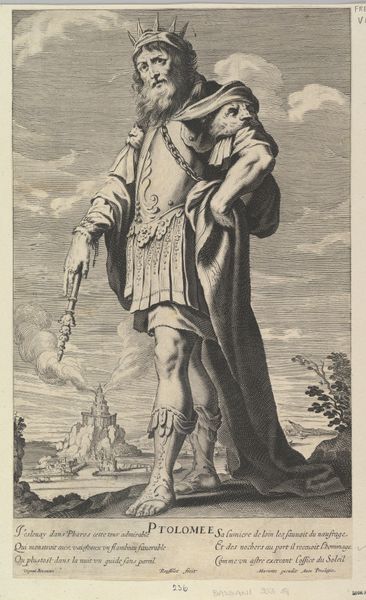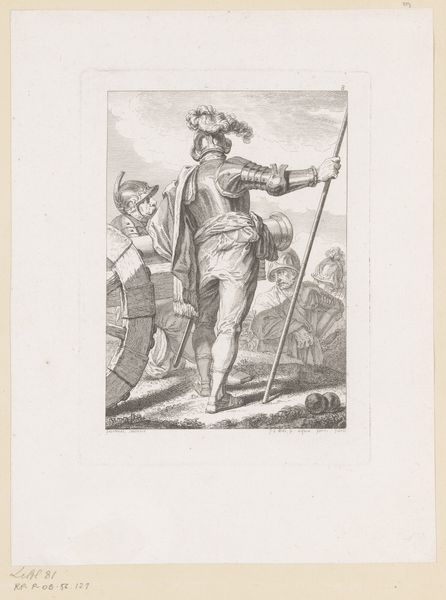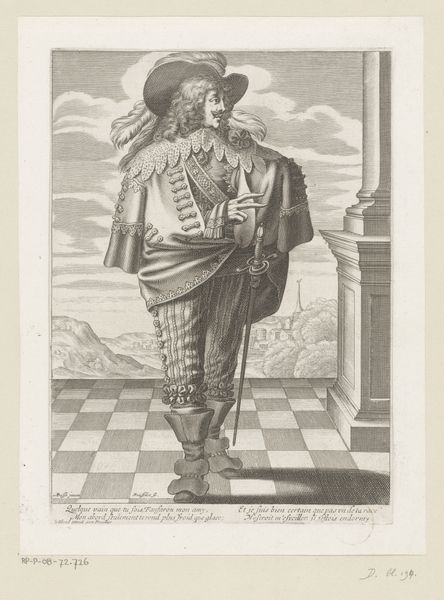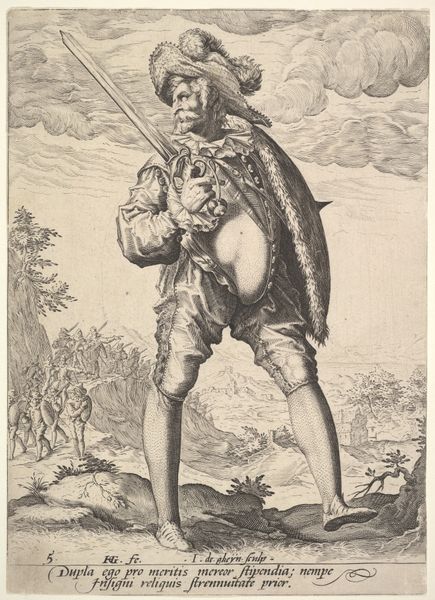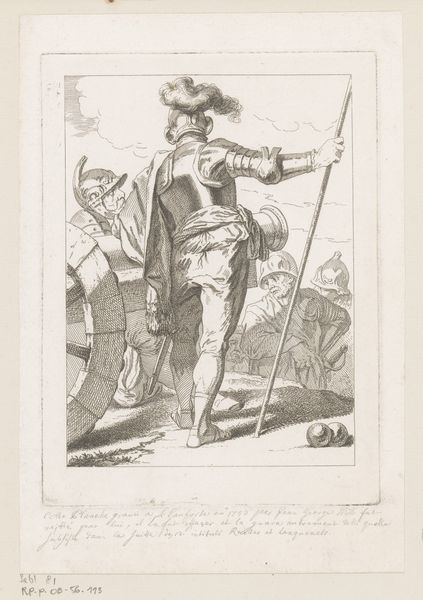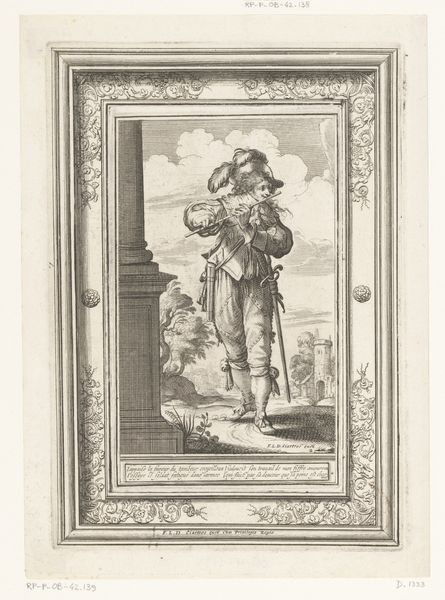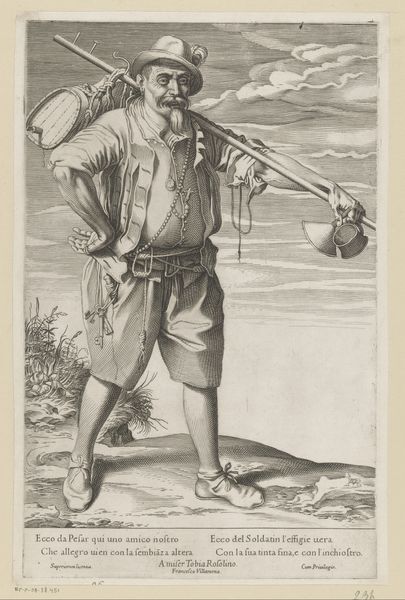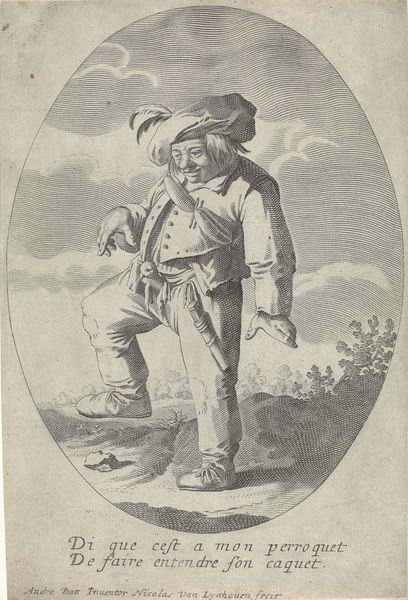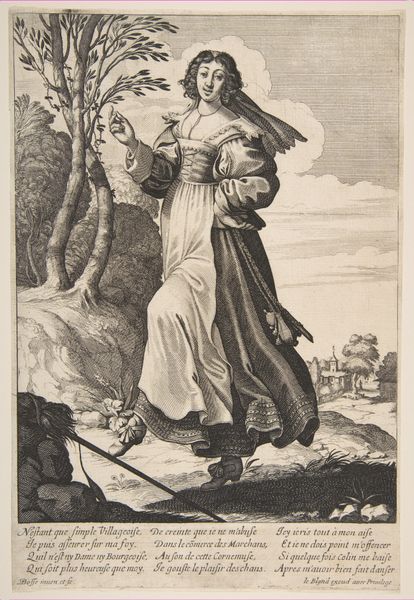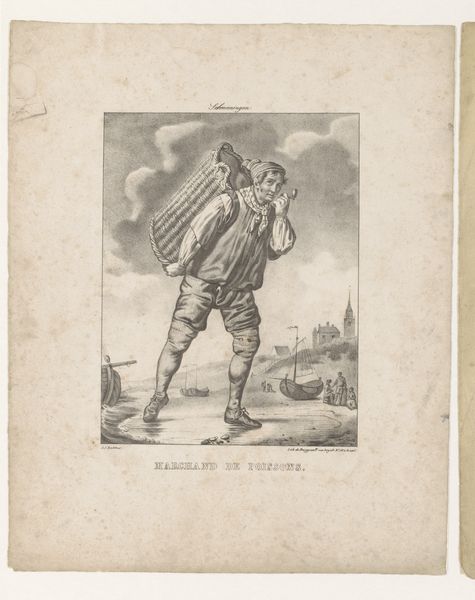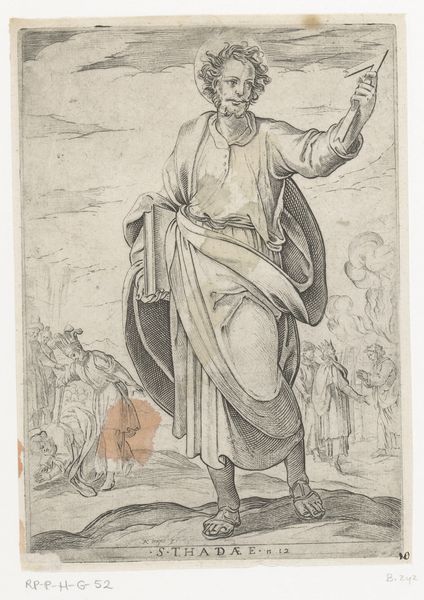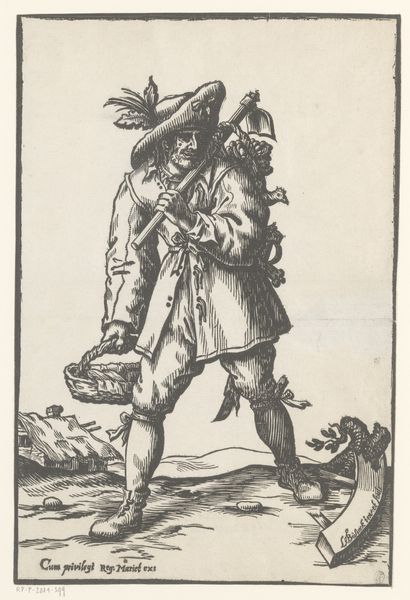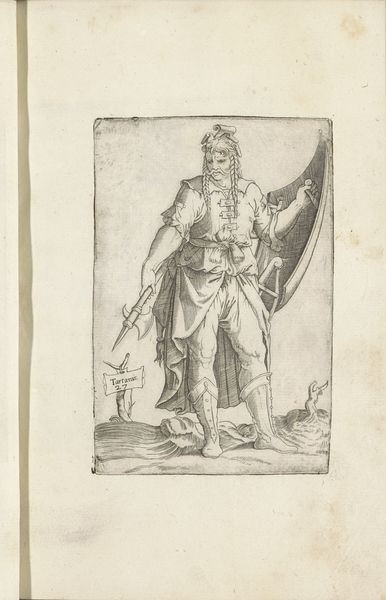
#
light pencil work
#
cartoon based
#
pencil sketch
#
old engraving style
#
traditional media
#
caricature
#
cartoon sketch
#
personal sketchbook
#
cartoon style
#
cartoon carciture
Dimensions: height 192 mm, width 129 mm
Copyright: Rijks Museum: Open Domain
This print of a flute player was made by Michel Lasne in the 17th century. It's an engraving, meaning that the image was incised into a metal plate, probably copper, with a tool called a burin. The sharpness of the lines, and the contrast between light and dark, is entirely dependent on the artist's control of the burin and the pressure exerted on it. Look closely, and you'll notice that Lasne has used a variety of hatching and cross-hatching techniques to create tonal variation. This would have been a laborious, repetitive process, requiring patience and skill. Prints like this were often produced for a mass market. The economics of printmaking meant that artists could reach a wide audience, but they also had to work efficiently, often relying on established visual formulas. The print’s title, ‘Hobo speler’ reflects a social context in which music was appreciated across social classes, and in which the figure of the wandering musician was a familiar sight. By considering the material and process involved, we can see how this print reflects the intersection of art, craft, and commerce in 17th-century Europe.
Comments
No comments
Be the first to comment and join the conversation on the ultimate creative platform.
